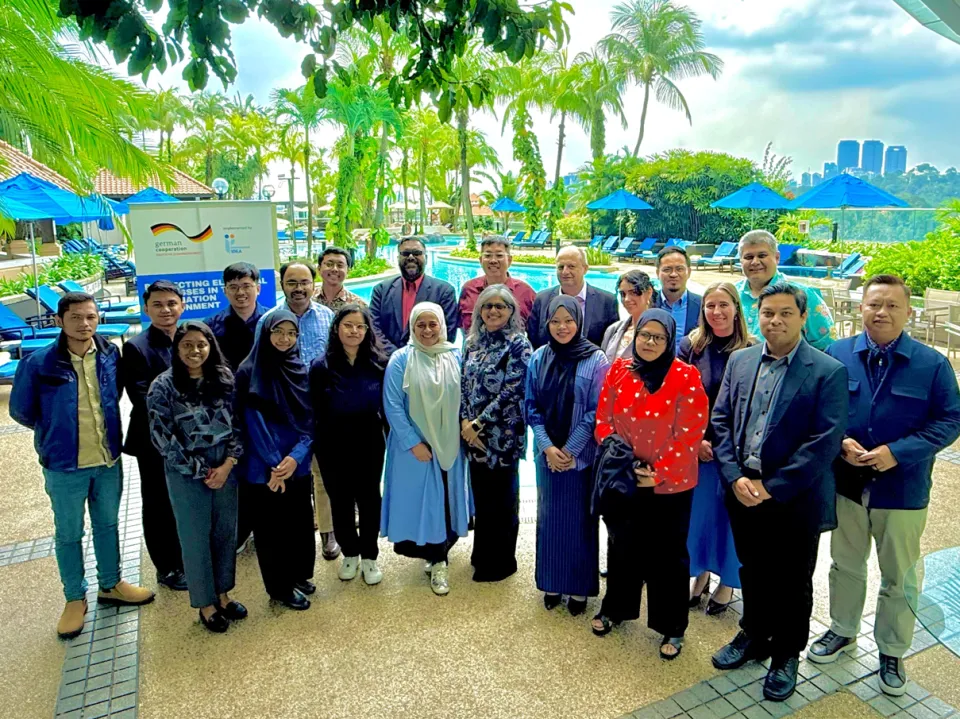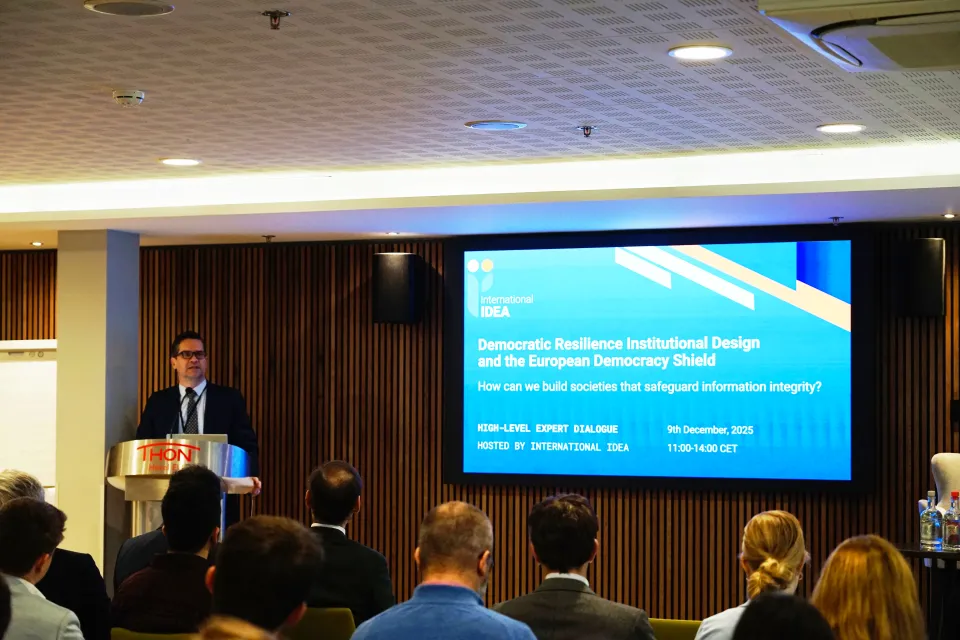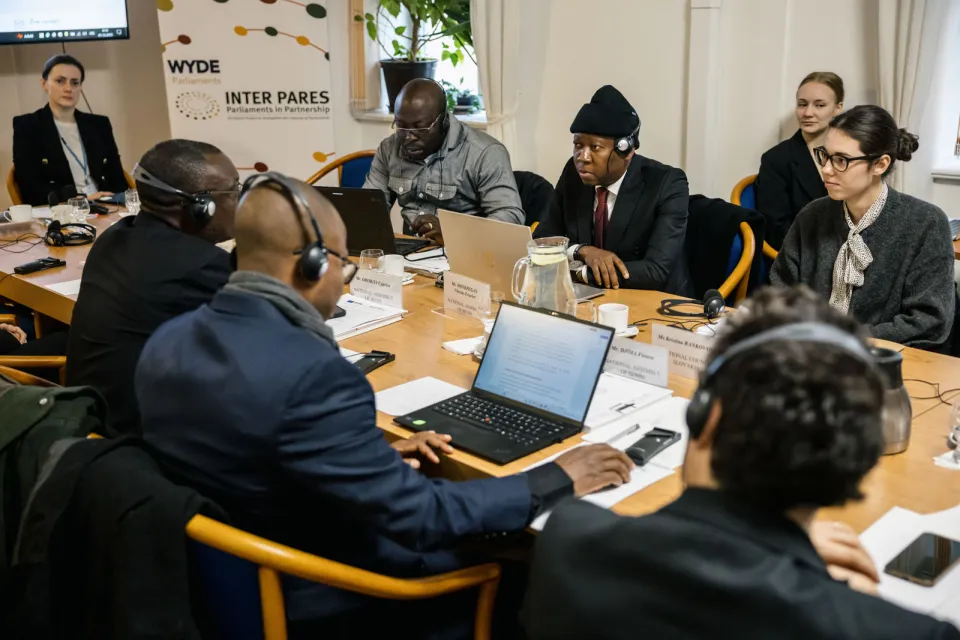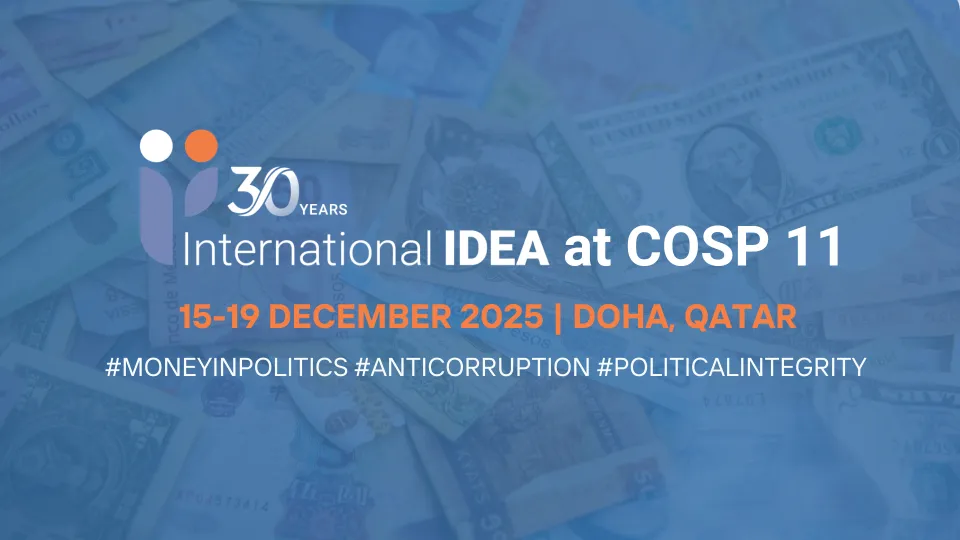International Women's Day 2017: Q&A with Aum Kunzang Lhamu, Director of Bhutan's National Commission for Women and Children
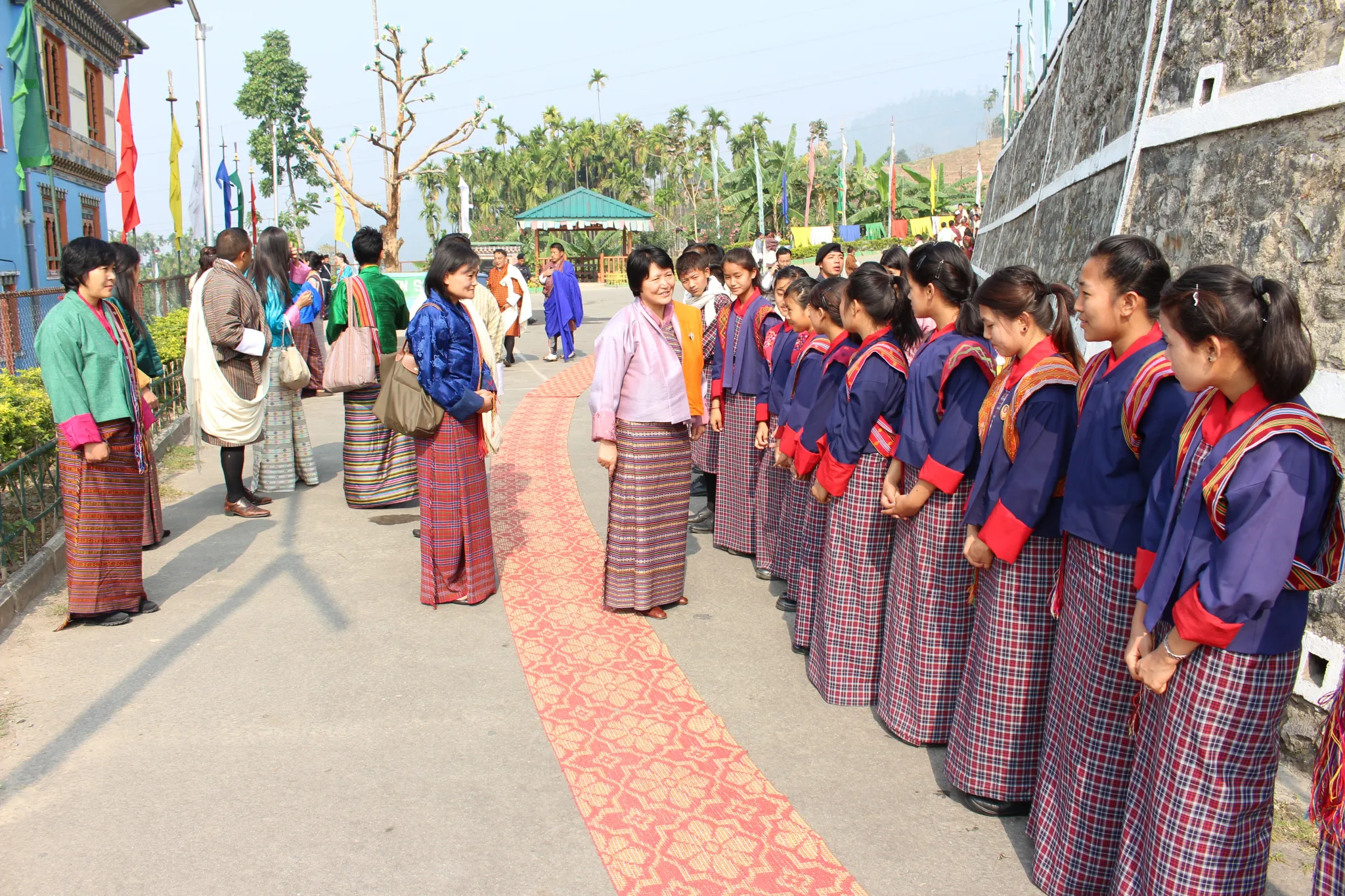
The Royal Government of Bhutan decided in early February to drop their pledge to introduce a 20 per cent quota for women in all elected offices. Lyonpo Dorji Choden, the Chairperson of the National Commission for Women and Children (NCWC) and the only woman minister in the Cabinet, announced at a press conference that the decision was made based on consultative meetings with stakeholders held by the Commission.
International IDEA’s Country Programme Manager for Bhutan, Adhy Aman, posed some questions to Aum Kunzang Lhamu, the Director of NCWC relevant to the findings of those consultative meetings and the following were her responses.

Source: ncwc.gov.bt
ADHY AMAN: First of all, could you please explain how these consultative meetings came about and how they were conducted?
KUNZANG LHAMU: Given the decrease in the representation of women in parliament from 13.88 per cent in 2008 to 8.33 per cent in 2013, which fell way below the target of 20 per cent that had been set in the National Plan of Action for Gender (NPAG), 2008-2013, coinciding with the 10th Five-Year Plan—three national consultations were held.
The main aims of these consultations were to assess the various challenges and opportunities for women in politics in Bhutan; to discuss quotas and affirmative actions for women in Bhutan which could lead to the drafting of context relevant legislation as was envisaged in the 11th Five-Year Plan; and to provide a common platform for all stakeholders to discuss and draft a way forward and strategize to enhance women’s participation in politics.
The first consultation was the National Consultation on Gender Equality in Elected Office, held on 13 December 2013 with 15 participants from the Royal Civil Service Commission (RCSC), the Election Commission of Bhutan (ECB), the Office of the Attorney General (OAG), the National Assembly (NA), the National Council (NC), non-governmental organization (NGO) representatives, the Prime Minister’s Office, the Department of Local Governance and development partners. The key outcome was the development of the National Plan of Action for Gender Equality in Elected Office (NPAPGEEO).
This led to the National Consultation Conference on Women in Politics, 1-2 April 2014, which had 180 participants comprising of Honourable Members of Parliament (MPs), government officials, women members of all five political parties, women who participated in the 2008 and 2013 elections, participants from civil society organizations (CSOs), private companies, corporations, local governments, gender focal points and development partners.
It was found that opinions on quota were mixed—some women believed that they wanted to earn their way through their own efforts while others felt that quota was necessary to address the gap in representation. The Terma Linca Statement was then formulated as follows:
Goals:
- Aimed at the 2nd Local Government elections of 2016 to increase the number of women elected through reserved seats by 20-50 per cent; and
- the 3rd national parliamentary elections (NA, NC) in 2018 to increase the number of women elected through reserved seats by 20-50 per cent.
Key points from the statement were:
- Develop sustained financial support for aspiring women candidates
- Political parties to mainstream gender in charter and manifesto
- Create institutions to train women candidates
- Media to ensure gender-sensitive coverage
- Political parties commit to recruit female candidates
This conference was followed by the National Consultation on Gender Equality in Elected Office to finalize the NPAPGEEO with 16 participants representing RCSC, ECB, OAG, NA, NC, NGOs, the Prime Minister’s Office, the Department of Local Governance and development partners. The outcome was the NPAPGEEO comprising of:
i) Part A - Identifies and prescribes ways and means of creating a demand for women’s participation (at the nomination level) in the Local Government (LG), National Council and National Assembly elections.
ii) Part B - Focuses on a variety of interventions to ensure that a consistent and adequate number of women contest the different elections. The interventions include creating awareness and providing the required support to create a level playing field by eliminating inequalities resulting from gender differences.
AMAN: Lyonpo Dorji Choden was quoted by Kuensel newspaper saying, "The findings from the consultations was that quota for women as such was not acceptable. That is why NCWC said quota is not practical.” Could you please elaborate on this?
KUNZANG LHAMU: The NPAPGEEO had been submitted to Cabinet and the Cabinet approved Part B of the proposal, which was to do with building capacities and creating awareness. As such, since Part A was not approved, it is NCWC’s resolve to review the NPAPGEEO to make it more realistic and implementable. An opportunity is provided by the 2nd National Conference on Women in Governance, Leadership and Politics in Thimphu, which will kickoff with the observation of the International Women’s Day from 8-10 March 2017.
AMAN: Apart from the government’s proposal of a 20 per cent quota, were there any other options brought forward at the consultations for raising women’s representation in governance? What did the consultations point towards for achieving critical mass of women in Bhutanese legislature?
KUNZANG LHAMU: As explained in the previous responses, the Terma Linca Statement and the development of the NPAPGEEO are the two significant outcomes emerging from the consultations that were held. Both of these, while further strengthening the government’s proposal of a 20 per cent quota, looked at different modalities that would contribute to increasing women’s representation in governance.
As a result of the three Consultative Meetings held, including the one which resulted in the Terma Linca Statement, the NPAPGEEO was developed on the basis of these meetings and was also based on researches that were carried out by NCWC and the Royal University of Bhutan (RUB), the NPAPGEEO proposes:
- The drafting of a Gender Equality Policy, which could lead to an act in the future based on lessons learned and experiences from implementing the policy.
- Part A of the NPAPGEEO proposes creating a demand for women's participation at the nomination level by requiring the nomination of one male and one female for every slot at the LG and NC elections.
- For NA elections it is proposed that parties should have 33 per cent of women candidates. ECB's comment is that this can be incorporated in the ECB Act only if it is an approved policy of the Government.
- Part B proposes supply-side interventions like identifying and training potential women candidates and providing an enabling environment for women to participate.
AMAN: What will the NCWC do to take those consultation findings forward as the nation gears up for parliamentary elections in 2018?
KUNZANG LHAMU: The NCWC will review the NPAPGEEO. The aforementioned 2nd National Conference on Women provides the opportunity to discuss the National Plan of Action, put in place a proposal that is mutually agreed and possible, and garners the ownership of key stakeholders such as the Election Commission of Bhutan and the political parties.
AMAN: In the Commission’s view, how can efforts to increase women’s representation in Bhutan benefit from international experience?
KUNZANG LHAMU: The international experience has and can provide valuable inputs in our efforts to increase women’s representation. In the drafting of the NPAPGEEO, the experiences of various countries and the different types of parity/quota systems in existence were taken into consideration. Further efforts and review of the NPAPGEEO will continue making reference to international experience in order to develop an action plan that is relevant to the Bhutanese context.
AMAN: How can the international community support the NCWC towards those efforts?
KUNZANG LHAMU: The international community could continue its support in our efforts through building capacity of key stakeholders concerned, such as women aspiring to be candidates, women members of political parties, political party executives and legislators, and through providing platforms for learning and exchanges on the issue.
AMAN: Thank you very much, Aum Kunzang. We believe your responses provide important insights globally towards the efforts undertaken for increasing women’s representation in Bhutan. International IDEA is one of the international partners supporting 2nd Conference on Women in Governance, Leadership and Politics and we are committed to continue our collaboration with Bhutanese institutions for the enhancement of women’s democratic representation and participation.

